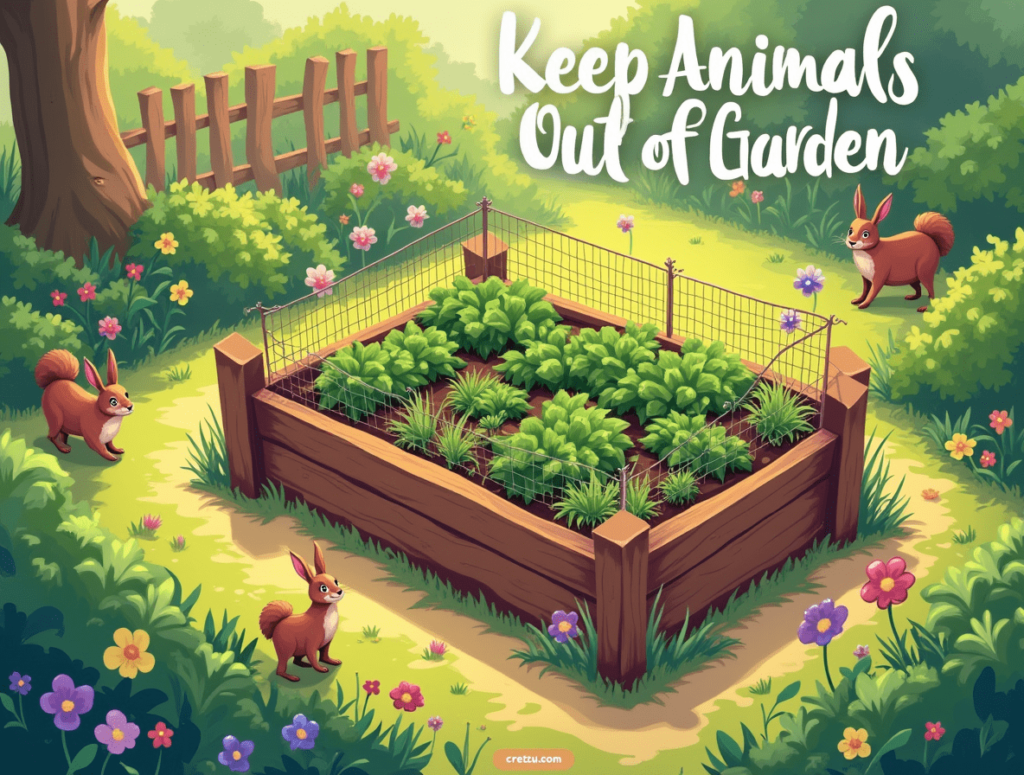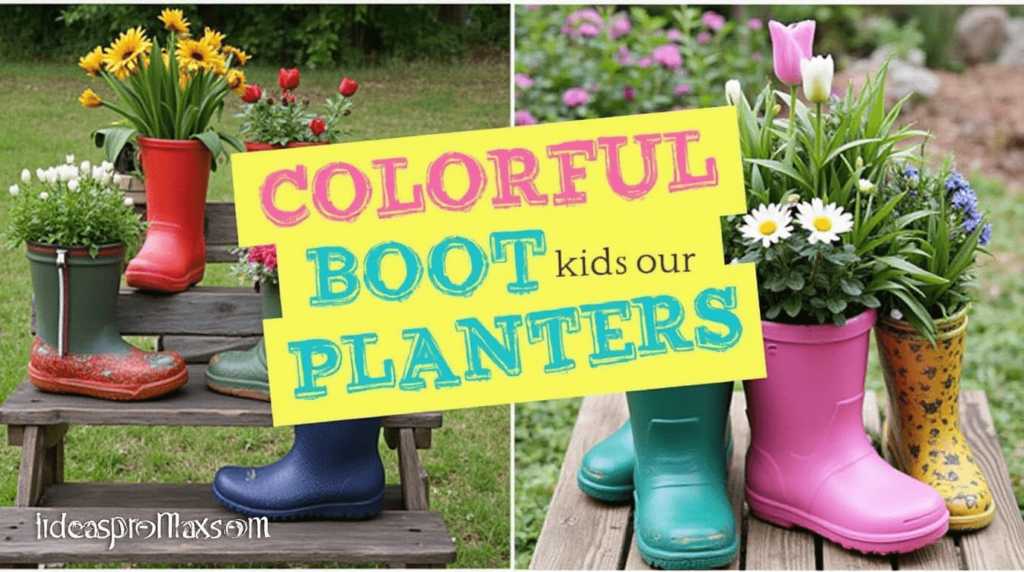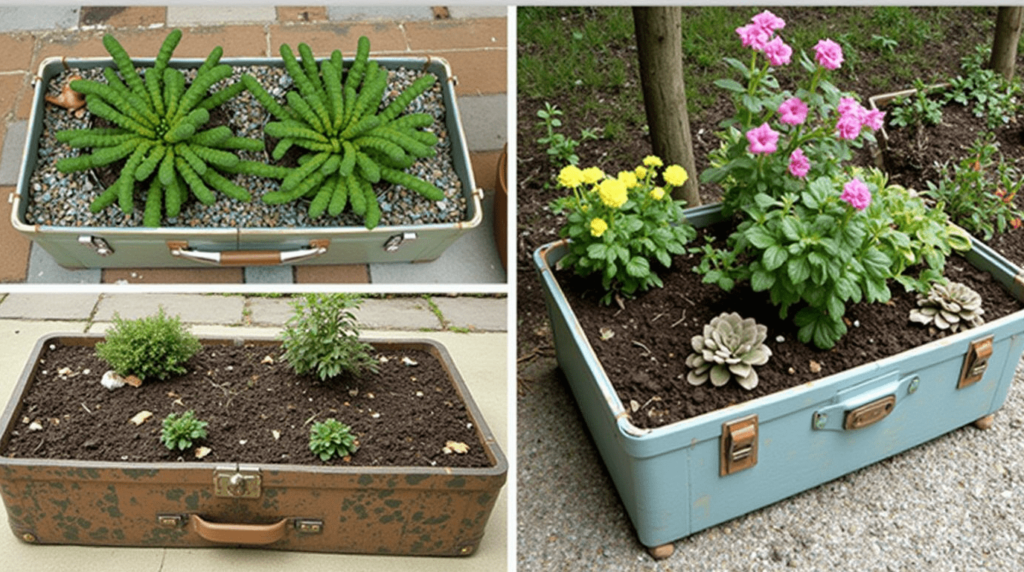When you learn how to plant a garden, one of the biggest challenges you’ll face is keeping curious and hungry wildlife from treating your carefully tended plants as their personal buffet. Understanding how to protect your garden from animal intruders is essential for maintaining a thriving garden space that rewards you with beautiful blooms and bountiful harvests.
Understanding Which Animals Target Gardens
Before discussing protection strategies, it’s important to identify which animals are causing problems in your garden. Each creature requires different deterrent methods when you’re planning how to plant a garden that stays protected.
| Common Garden Pests | Damage Signs | Primary Targets |
|---|---|---|
| Rabbits | Clean-cut stems at 45° angles | Vegetables, young plants |
| Deer | Ragged torn plant tops, tracks | Fruits, vegetables, ornamentals |
| Squirrels | Dug-up areas, partial eating | Bulbs, seeds, fruits |
| Birds | Pecked fruits, missing seeds | Berries, seeds, fruits |
| Groundhogs | Large holes, extensive damage | Root vegetables, leafy greens |
| Raccoons | Nighttime damage, tipped plants | Corn, melons, ripe fruits |
Physical Barriers: The First Line of Defense
When planning how to plant a garden that remains protected from wildlife, physical barriers are your most reliable option.
Fencing Solutions
A well-constructed fence is often the most effective deterrent when you’re learning how to plant a garden in areas with high animal pressure:
- For rabbits and groundhogs: Use chicken wire with 1-inch mesh, buried 6-12 inches underground and extending 2-3 feet above ground.
- For deer: Install 8-foot tall fencing, as deer are exceptional jumpers.
- For birds: Consider lightweight netting over fruit trees and berry bushes.
- For climbing animals: Add an electric wire at the top or create an overhanging top section that prevents climbing over.
“The best garden fence combines height to prevent jumping, depth to prevent digging, and appropriate materials to prevent squeezing through.” – Master Gardener Association
Raised Beds and Containers
When considering how to plant a garden with built-in protection, raised beds offer excellent advantages:
- Elevate beds at least 2-3 feet off the ground to deter smaller animals
- Add hardware cloth beneath raised beds to prevent burrowing animals
- Consider container gardening for maximum control over growing conditions and animal access
Natural Repellents and Deterrents
As you learn how to plant a garden that naturally deters wildlife, consider these environmentally friendly options:
Companion Planting for Protection
Certain plants naturally repel garden pests when incorporated into your garden plan:
- Deer-resistant plants: Lavender, sage, rosemary, boxwood
- Rabbit deterrents: Onions, garlic, marigolds, snapdragons
- Squirrel repellents: Daffodils, hyacinths, alliums
- Rodent deterrents: Mint, lavender, sage (caution: mint spreads aggressively)
Scent and Taste Deterrents
Animals rely heavily on their sense of smell and taste when selecting feeding sites:
- Homemade spray: Mix 1 tablespoon hot sauce, 1 minced garlic clove, and 1 cup water in a spray bottle
- Commercial repellents: Look for products containing predator urine, garlic oil, or capsaicin
- Scatter approach: Sprinkle blood meal, crushed red pepper, or coffee grounds around vulnerable plants
Motion-Activated Solutions
Modern technology offers effective solutions for gardeners learning how to plant a garden with technological protection:
- Motion-activated sprinklers: Deliver a startling but harmless burst of water when movement is detected
- Ultrasonic repellers: Emit high-frequency sounds unpleasant to animals but inaudible to humans
- Motion-sensor lights: Particularly effective against nocturnal visitors like raccoons and deer
Creating a Wildlife-Friendly Alternative
When planning how to plant a garden that coexists with local wildlife, consider creating designated wildlife areas:
- Plant a separate “decoy garden” with animal favorites away from your main garden
- Install bird feeders and birdbaths far from vulnerable plants
- Create brush piles or rock gardens as alternative habitats for small mammals
Seasonal Protection Strategies
Different seasons require adjusting your approach to how to plant a garden with appropriate protection:
Spring Protection
- Cover newly planted seeds with row covers or cloches
- Apply repellents more frequently during the spring breeding season
- Install protective collars around young seedlings
Summer Vigilance
- Harvest ripe produce promptly to reduce attracting animals
- Reapply repellents after rain
- Maintain fence integrity by checking regularly for dig spots or damage
Fall Preparation
- Remove fallen fruits and vegetables that attract wildlife
- Apply protective measures to fall-planted bulbs
- Consider adding winter protection for perennials
Integrated Protection Approach
The most successful strategy when learning how to plant a garden that stays protected combines multiple methods:
- Start with appropriate physical barriers
- Add natural repellents as a secondary defense
- Incorporate technological solutions in particularly vulnerable areas
- Monitor regularly and adjust your approach based on results
Final Thoughts on Protecting Your Garden
Learning how to plant a garden that thrives despite wildlife pressure takes patience and experimentation. Different animals respond to different deterrents, so be prepared to try various approaches until you find what works for your specific situation.
Remember that consistency is key—most protection methods need regular maintenance and reapplication. With the right combination of strategies, you can enjoy the fruits of your gardening labor without sharing too much with the local wildlife.
What methods have you found most effective for keeping animals out of your garden? Share your experiences in the comments below!


